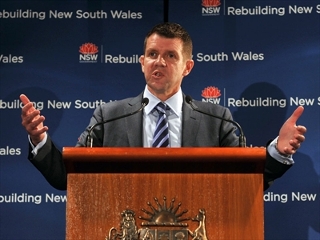
 On Tuesday, the New South Wales Treasurer Mike Baird revealed his second budget, predicting a budget deficit of around $824 million in the 2012/13 financial year, up from a projected deficit of $337 million in 2011/12. This is due to falling GST payments from the Commonwealth of more than $5 billion.
On Tuesday, the New South Wales Treasurer Mike Baird revealed his second budget, predicting a budget deficit of around $824 million in the 2012/13 financial year, up from a projected deficit of $337 million in 2011/12. This is due to falling GST payments from the Commonwealth of more than $5 billion.
Braid said that countrywide collapse in the household spending would see its part of GST revenue decrease by $5.2 billion in the next four years which would force the government to take actions in order to protect its prized AAA credit ratings.
The government has planned to raise funds by leasing the Port Kembla shipping terminal to the private sector. He told to reporters, “Without action, the AAA would be gone, if not materially under threat, so that’s the challenge we have faced and, clearly, we have taken action to address that.”
The government would also raise its spending on infrastructure and an additional $581 million for housing infrastructure in 2012/13. The first home buyer changes together with an increase of $561 million in infrastructure funding to stimulate housing supply.
Braid also said, “We have applied the money to help deliver that, both in terms of demand incentives, (and) getting the infrastructure on the ground; that’s the sewerage, the water.”
He added, “The whole premise of this budget is making these difficult decisions so we can get our state moving, so we can see the building going, so we can see the housing sector moving, we can see jobs, we can see investment.”
The government expects to go back to the black in 2013/14 with an estimated surplus of $289 million, rising to $1.2 billion by 2015/16.
Braid said, “We have taken many difficult decisions” and “some will not be popular, but they are the right decisions for challenging economic times”.
The redundancy rate was anticipated to increase from 5.25 percent to 5.5 percent. Braid reported, “It’s a soft economy that’s heading back towards trend.”

Be the first to comment